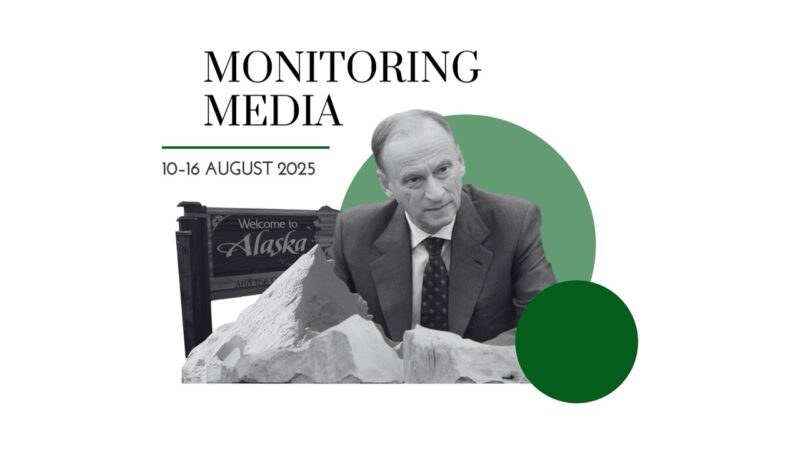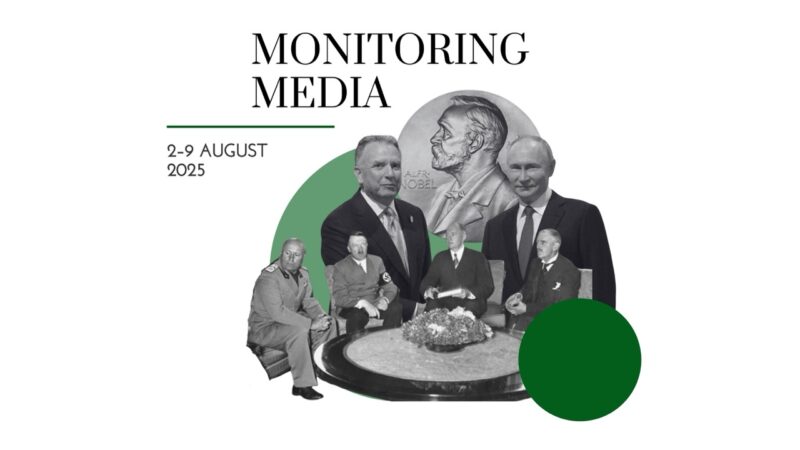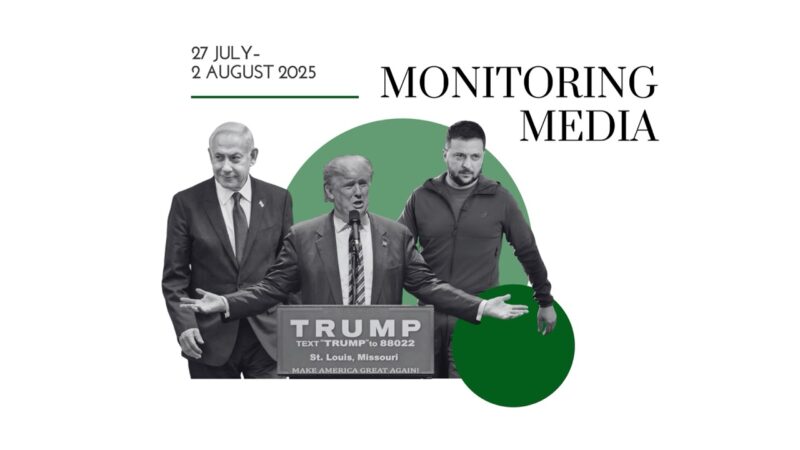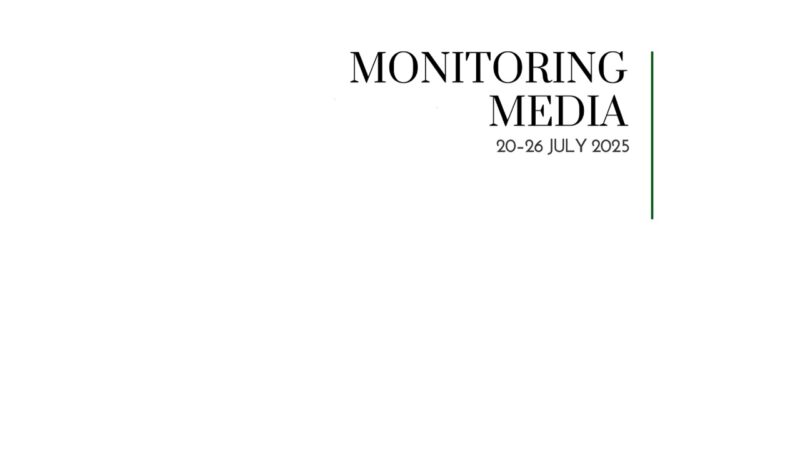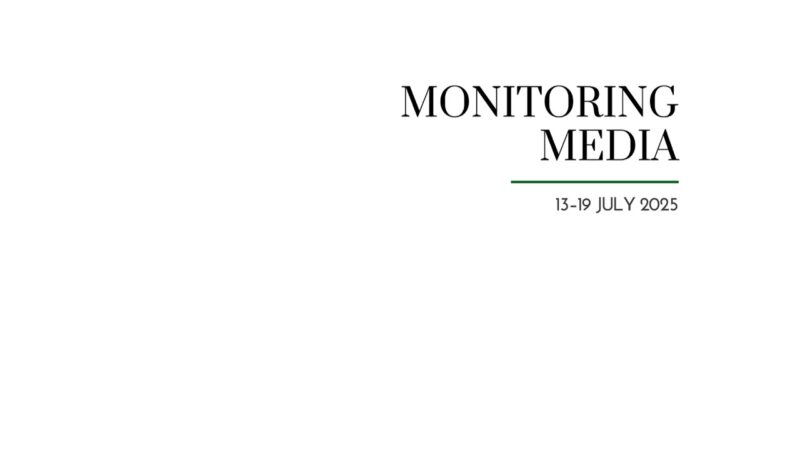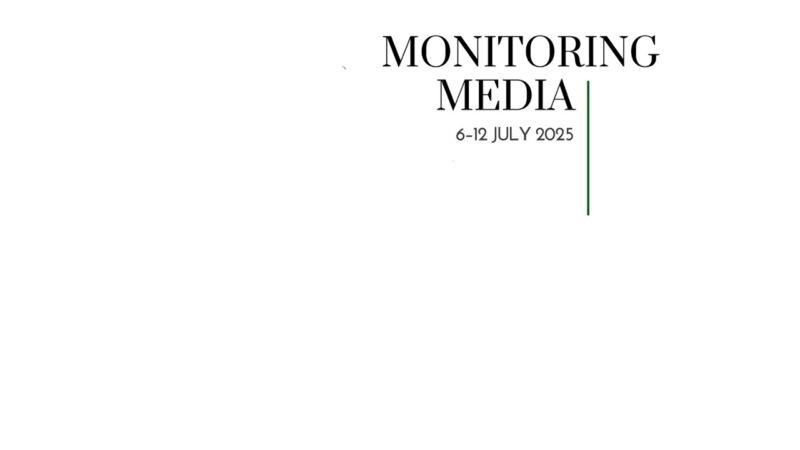Russian army faces multiple uncertainties

CIUS weekly report on North American media coverage of Ukrainian affairs, 13–19 October 2024
Six publications (The National Interest, Foreign Affairs, The Washington Post, Politico, The Wall Street Journal, and The Economist) were selected to prepare this report on how Ukraine has been portrayed in the North American press during the past week. The sample was compiled based on their impact on public opinion as well as on their professional reputation, popularity among the readership, and topical relevance. These publications represent centrist viewpoints on the political spectrum.
This MMS report covers only the most-read and relevant articles about Ukraine, as ranked by the respective North American publications themselves in the past week. Its scope covers promoted articles on home pages and articles from special sections on Ukraine, with the hashtag #Ukraine, from the paper editions of the publications, and about Ukraine from opinion columns and editorials.
Featured topics
- The world and Ukraine: peace talks between Kyiv and Moscow being requested by Americans; private aid for Ukraine declining; land for land solution could bring peace closer.
- Russia at war: Russian army faces multiple uncertainties; why young people in Russia are not rebelling; Kremlin unleashes sabotage, subversion, and spy tactics across Europe, US.
MMS summaries
Russian army faces multiple uncertainties. Nick Reynolds (National Interest) argues that Russia’s war against Ukraine has highlighted the weakness of the Russian military forces. In the nearly three years since the start of the full-scale invasion, Moscow’s armies have degraded even further. It is impossible to predict the future of the Russian armed forces, but it is possible to predict trends that can be expected based on the lessons of war that Moscow has learned so far. For one thing, the Russian army has improved its electronic warfare, air defence, and drone integration, making it more lethal and survivable. For another, structural changes have been made at the higher level: “the split of the Western Military District into the Moscow and Leningrad military districts indicates re-posturing towards a potential war in the Baltic region, a longer-term change in posture indicative of a more confrontational approach to NATO”; also, the Russians failed with battalion tactical groups: “Tactical Groups (BTGs) were essentially abandoned due to ineffectiveness and replaced by a more traditional, hierarchical military structure. … Russia’s logistics system had not been adjusted in line with the BTG concept and was not able to support the large number of small and complicated formations that were initially deployed.” Institutional corruption and neglect of personnel remain significant barriers to modernization. According to Reynolds, “Russia’s military future depends on addressing these deep-rooted issues while adjusting its doctrine and force structure.”
Why are young people in Russia not rebelling? Andrei Kolesnikov (Foreign Affairs) argues that in the almost three years since the beginning of Russia’s full-scale invasion of Ukraine, Russian youth has changed dramatically, with constant indoctrination and constraints on their freedom: “Many try to distract themselves from this new reality, not paying too much attention to it; the very few who express their discontent openly—or do things like trying to set fire to a military recruitment center—are sometimes punished with harsh prison sentences despite their young age.” It is especially difficult for men between the ages of 18 and 30, who may find themselves in the war zone against their will: “In other words, a fundamental feature of the conflict is that Putin and his aging Politburo are deciding for the younger generations not only how to live but also how to die.” According to the author, however, the assumption is wrong that a new generation, more open to democratic values and market capitalism, is capable of changing the system. Russian youth have never experienced normal democracy and have never known anyone but Vladimir Putin. In addition, along with repression and persecution, the Kremlin regime “has used an extensive array of rewards to keep young Russians loyal—including offering special privileges to those who serve in the army, work in the military-industrial complex, or otherwise show themselves to be diligently toeing the line. It has also sought to use patriotic youth movements and social media to shape their attitudes and build their loyalty.” The combined effect of brutal repression mixed with aggressive courtship achieved its goal: “Among Russia’s youth today, there are few signs of any meaningful currents of resistance. Instead, many of them seem to be passive or active conformists, seizing on the opportunities that the still-present market economy or big enterprises provide for young careerists.” Kolesnikov hopes that many young Russians will learn to do two things simultaneously: “Adapt to the rules of the system but still think another way. Eventually, the external political environment will change, and when that happens, this widespread double consciousness could allow them to reject the stifling system they have known.”
Is the US ready to give up on Ukraine? Robert Kagan (Washington Post) argues that all the talk about ending Russia’s war against Ukraine through peace negotiations is aimed at the Americans. Peace talks are no guarantee that Moscow will not try to take away Ukrainian territories later, when it recovers from its losses. The assumption that it is the Ukrainians who are standing in the way of peace talks because they refuse to give up the lost territories is wrong. Russia is actually the main actor opposing peace talks. For Moscow, any negotiations other than Ukraine’s surrender would look extremely strange: “Before the war, Russia faced a relatively weak and politically divided Ukraine trying with only modest success to forge closer ties with a hesitant Europe and an ambivalent United States. At the end of 2021, Ukraine had a little over 200,000 active-duty soldiers, while Russia had more than 900,000. Three years later, the war transformed both Ukraine and the military balance in central and Eastern Europe. Today, Ukraine has more than 900,000 active-duty soldiers and hundreds of thousands of trained and battle-tested reserves. It has become, in fact, larger than the forces of Britain, Germany, and Poland combined.” In this context, the exchange of Donbas and Crimea for “an angry, powerful, revanchist Ukraine, heavily armed and trained by the West and increasingly integrated in NATO, with or without formal membership” is highly questionable. And this is without taking into account Finland and Sweden, which became NATO members, as well as the enormous human and economic losses of Russia itself. Therefore, only the US needs peace talks. According to the author, Washington’s foreign policy toward Ukraine is determined by what Americans do not want: “They don’t want to wind up at war with Russia; they don’t want to spend hundreds of billions of dollars every year on a seemingly unwinnable war; but they also don’t want to bear the guilt and shame of letting Ukraine lose, with all the humanitarian horrors and strategic problems that entails.” According to Kagan, the current US course is unlikely to lead to a stable settlement, and certainly not to a peace agreement: “This is not one of those “win-win” situations. Unless something dramatic changes, this is a war that, like most wars, will be won or lost on the battlefield. We are not going to be rescued by a peace deal. Americans need to decide soon whether they are prepared to let Ukraine lose.”
“Land for land” is a solution. Andreas Umland (National Interest) suggests that the Kursk operation could become a tool to force Moscow to negotiate with Kyiv on a parity basis. Calls from Beijing and other non-Western capitals for a ceasefire and a Russian-Ukrainian truce have taken on new significance since Ukraine’s occupation of Russia’s western territories. The will of Beijing or New Delhi can force Moscow to the negotiating table: “Ukraine’s unexpectedly successful and deep incursion into Russian territory on August 6, 2024, has changed the conversation about the Russo-Ukrainian War. The most important international impact that the Ukrainian surprise action may eventually have is on officially neutral non-Western countries such as China, India, or Brazil.” According to the author, if Moscow fails to stop the Ukrainian offensive in the near future, “it will change Kyiv’s position and leverage in hypothetical negotiations, which many third actors have officially promoted since the war started in 2014.” Thanks to the Kursk operation, Ukraine has reversed dubious “sovereignty/security/land-for-peace” arguments. According to Umland, “Ukraine’s incursion into the Kursk Region since early August 2024 could be the last chance to prevent further escalation and expansion of the conflict beyond the Russo-Ukrainian frontline.”
Ukraine braces for harsh winter (again) as Russia intensifies assaults. James Marson (Wall Street Journal) highlights an increasingly challenging situation Ukraine faces as the war approaches the end of its third full year, with Russia ramping up its offensives despite enduring significant losses. Ukrainian troops, struggling with equipment shortages and outnumbered on the battlefield, are clinging to strategic positions in the east, like Chasiv Yar, but losing ground in strategic places such as Vuhledar and Pokrovsk in the Donbas region. Russian forces are threatening to sever a key supply route for Ukraine. Meanwhile, their missile and drone attacks are targeting Ukraine’s energy infrastructure, overwhelming air defences and causing widespread blackouts. With winter approaching and Western arms deliveries slow and insufficient, Ukraine’s situation is becoming more precarious, according to Marson. President Volodymyr Zelensky’s repeated calls for more advanced weaponry, including long-range missiles like ATACMS and Storm Shadow, have received a lukewarm response from the US, with concerns about escalating the war further. The author also highlights the growing danger of a peace deal with Russia, especially given Donald Trump’s pledge to seek a quick resolution should he win the US presidency in November. Experts warn that any settlement with Russia without a decisive Ukrainian victory would only lead to a temporary pause, allowing Russia to rearm and resume its offensive. As Cpl. Oleksandr Solonko, a Ukrainian drone pilot, stressed to the author: “They will attack again, and it will continue like that until our country disappears from the world map.”
Private aid for Ukraine faces decline, but volunteers press on. Daniel Block (Politico) emphasizes the crucial role private donations and volunteer efforts have played in Ukraine’s defence against Russia, while highlighting the alarming decline in such support. The author argues that as government aid takes time to mobilize, private organizations have been indispensable in providing immediate assistance, such as food, night-vision goggles, and electronics. However, these groups are now grappling with dwindling donations and volunteer fatigue, jeopardizing their contribution to Ukraine’s war effort. This decline in attention to and help for Ukraine “endangers a lot of lives” as fewer donations and volunteers mean Ukrainian troops lack vital gear, leading to casualties and weakened resistance. As Ohman puts it: “It’s not about the money. It’s about the right thing to do,” underscoring their commitment to supporting Ukraine’s fight, regardless of the difficulties.
Kremlin unleashes sabotage, subversion, and spy tactics across Europe, US. The editorial board of the Economist argues that Russia’s increasingly aggressive foreign policy has been behind a surge in sabotage, espionage, and disinformation across Europe and beyond. Russian intelligence, particularly the GRU, is executing a coordinated campaign to destabilize Western nations through violent acts, cyberattacks, and fomenting division. Intelligence leaders from the UK, Germany, and other countries have raised alarms about the escalation of these covert actions, which range from arson and sabotage to assassination attempts on high-profile targets. Russia’s strategy seems to centre on creating chaos and undermining the West, with British MI6 chief Richard Moore noting that “Russian intelligence services have gone a bit feral, frankly.” The authors add that the campaign isn’t limited to Europe—Russia is meddling in Africa, the Middle East, and even the US, using disinformation and cyberattacks to disrupt societies and institutions. Fiona Hill, a former US National Security Council official, suggests that Putin’s strategy is “hitting us all over the place” in an attempt to distract and disrupt. While Russia’s tactics are increasingly reckless, they are not without vulnerabilities, the authors suggest. The reliance on criminal proxies rather than professional intelligence agents, has led to operational failures, and Western security agencies have had some success in countering these efforts.
